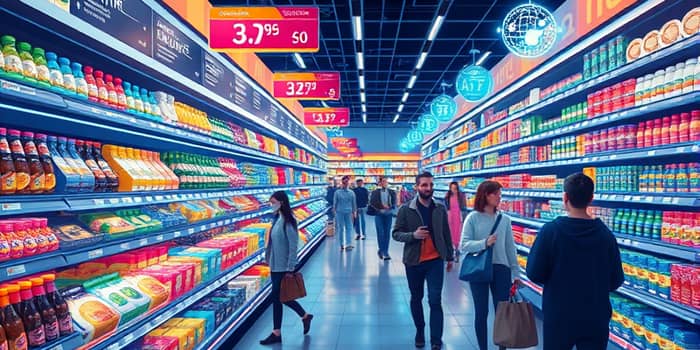
In the face of unprecedented global challenges, consumer goods firms are rewriting the rules of how they set prices. Their goal is to stay profitable while earning customer loyalty through more innovative and transparent approaches.
The year 2025 finds brands battling against mounting inflation, raw material shortages, and supply chain hiccups. Food prices alone rose 2.9% year-over-year in May, surpassing the overall 2.4% CPI increase. Within that sector, sugar and sweets jumped 4.1%, poultry climbed 2.3%, and fresh vegetables fell by 2.5% due to surging supply in some regions.
Consumers, feeling each uptick at the checkout, have become exceedingly price-sensitive. They now operate within fixed budgets and demand clear value for every dollar spent. In response, companies must do more than raise prices uniformly—they need to craft nuanced strategies that reflect market realities and customer expectations.
Gone are the days when cost-plus pricing was sufficient. Today’s leaders leverage real-time analytics and AI to adjust price points moment by moment. Platforms like Pricefx and Revionics ingest market data, competitor moves, and inventory levels to recommend optimal pricing strategies for each SKU.
By deploying dynamic pricing models, companies can respond instantly to cost fluctuations and changes in consumer demand. This agility boosts profit margins while allowing targeted discounts during slow periods or premium pricing during peak seasons.
Recognizing that perceived value often outweighs production cost, savvy brands are moving toward value-based pricing. Through sophisticated consumer research—such as conjoint analysis and willingness-to-pay studies—they determine how much different segments will pay for features like organic ingredients or eco-friendly packaging.
For instance, an organic baby food line might offer standard blends at competitive rates while charging a premium for its “superfood” variety based on demonstrated consumer preference. Such deep consumer insights foster loyalty and keep brands aligned with evolving tastes.
Companies are also implementing localized pricing adjustments, tailoring product costs by geography to reflect local purchasing power and competitive intensity. Geolocation tools embedded in ERP systems ensure prices match consumer expectations in every region.
The surge in DTC channels is transforming pricing playbooks. US DTC online sales are projected to soar from $135 billion in 2023 to $227 billion in 2025. This direct relationship grants brands unparalleled access to first-party data, which fuels personalized promotions and subscription models.
Using tailored promotional campaigns, firms can deliver targeted bundles or loyalty discounts that increase lifetime customer value. These approaches turn one-time buyers into repeat purchasers by continuously reinforcing perceived value.
While tactical discounting remains a tool, companies are more strategic about when and how much to discount. They focus promotional campaigns on specific products or time windows to avoid long-term margin erosion.
Everyday Low Pricing (EDLP) emerges as an attractive alternative in highly competitive, price-sensitive categories. By maintaining consistently low prices rather than cycling through sales, brands build trust and predictability for consumers.
In an era of heightened scrutiny, brands must pair their pricing algorithms with transparent value communication. Clearly explaining why a product costs what it does—whether due to premium sourcing or advanced production methods—builds credibility and strengthens consumer trust.
Openly sharing details about ingredient origins, environmental commitments, or fair labor practices resonates with conscious buyers. When customers understand the story behind the numbers, they are more willing to pay a premium and remain loyal over time.
The road ahead demands constant adaptation. By embracing data-driven pricing, crafting value-centric models, and fostering open dialogue, consumer goods companies can navigate inflationary headwinds while delighting customers. As markets continue to evolve, those who balance profitability with empathy and transparency will emerge as the true champions of 2025 and beyond.
References













